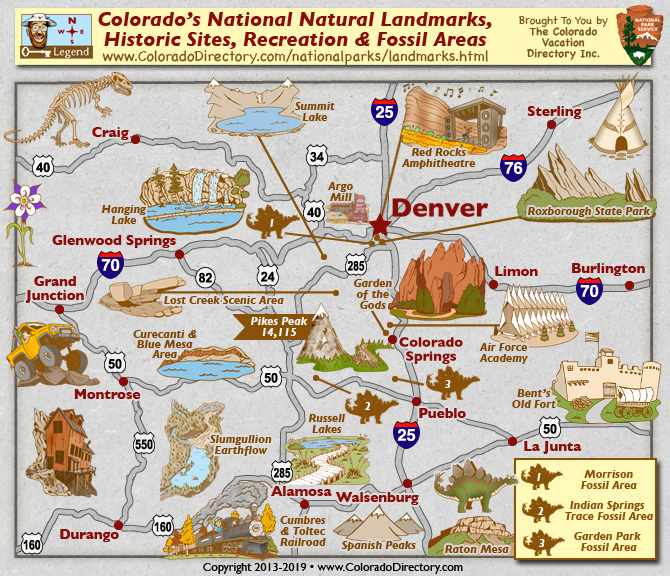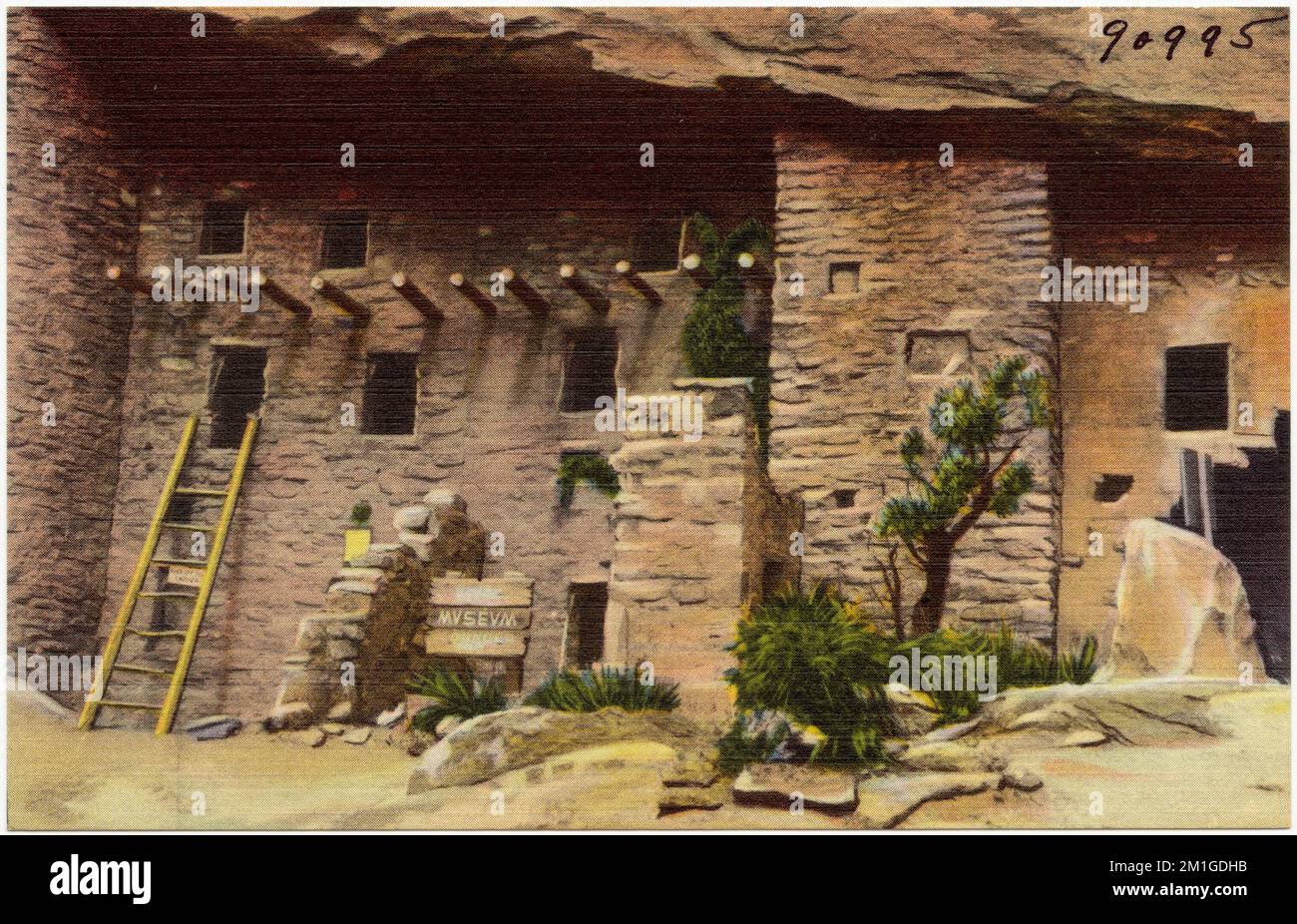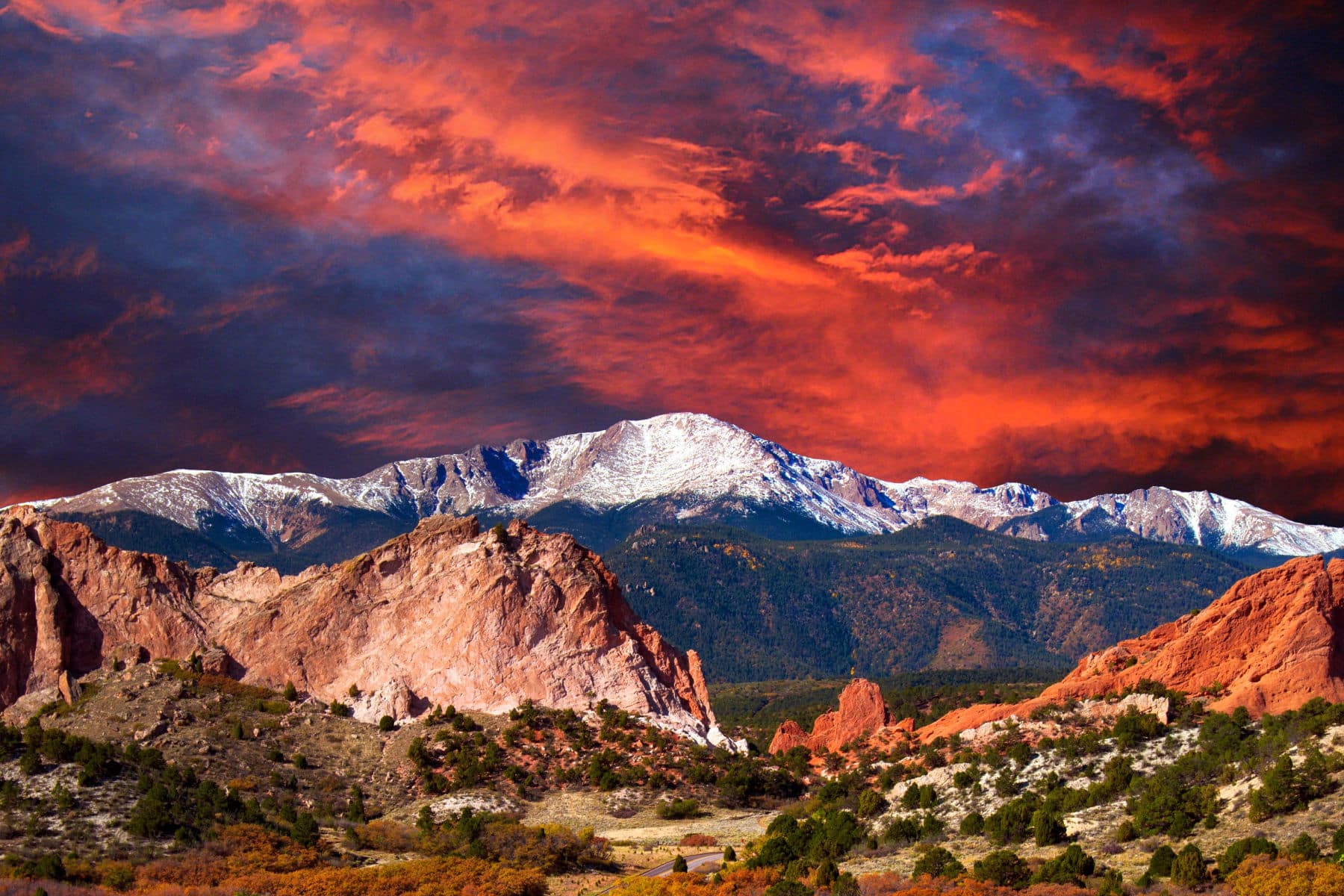
Echoes in the Landscape: Exploring America’s Legends Through its Historic Sites
America, a nation often perceived as young on the global stage, nonetheless boasts a rich tapestry of legends and folklore that rivals those of ancient lands. These aren’t just quaint campfire stories; they are deeply woven into the fabric of its history, its diverse cultures, and, most tangibly, its historic sites. From the sacred grounds of Indigenous peoples to the battle-scarred fields of revolution, from the dusty trails of the Wild West to the bustling streets of its oldest cities, America’s legends come alive where history was made, inviting us to explore the blurred lines between fact and myth.
The allure of these tales lies in their power to connect us to a past that feels both distant and intimately present. They shape our understanding of identity, illuminate cultural values, and often serve as an enduring testament to the human spirit’s resilience, its capacity for wonder, and its enduring struggle with the unknown. By visiting the places where these stories originated or are said to have unfolded, we don’t just observe history; we immerse ourselves in the very essence of American legend.
I. Indigenous Voices: The Land Remembers

Long before European settlers arrived, the North American continent pulsed with the stories of its first peoples. These Indigenous legends are not mere myths; they are sacred narratives, creation stories, and moral teachings that explain the world, its creatures, and humanity’s place within it. They are inextricably linked to the land itself, making countless natural landmarks historic sites of profound spiritual significance.
Consider the Grand Canyon, a geological marvel that transcends mere scenic beauty. For the Havasupai, Hopi, and Navajo nations, among others, it is a sacred space, a place of emergence and spiritual journeys. The Hopi, for example, believe their ancestors emerged from the Sipapu, a mythical hole, into this world, eventually settling in the Grand Canyon region. Every rock formation, every winding path, holds a story of their ancestors, their deities, and their relationship with the earth. Visiting the South Rim’s Mather Point or Desert View Watchtower, one isn’t just seeing a vista; one is standing on ground steeped in millennia of spiritual narrative. The quiet reverence felt by many visitors echoes the profound respect Indigenous cultures hold for this magnificent chasm.
Similarly, the Black Hills of South Dakota are the sacred Paha Sapa to the Lakota people. Legends of creation, of the White Buffalo Calf Woman bringing spiritual teachings, and of warriors’ visions fill this rugged landscape. While Mount Rushmore stands as a symbol of American nation-building, the surrounding hills, including Bear Butte (Mato Paha), remain vital sites for Lakota ceremonies and spiritual quests. "The Black Hills are the center of the universe for the Lakota people," explains Lakota elder Basil Brave Heart. "They are our church, our place of worship, where we go to pray." Understanding this adds a profound layer to any visit, shifting the focus from national monument to ancient, living legend.
Further east, the enigmatic Cahokia Mounds State Historic Site in Illinois tells a different kind of Indigenous legend – one of a vast, complex civilization that flourished a thousand years ago. The enormous Monk’s Mound, larger at its base than the Great Pyramid of Giza, dominates a landscape dotted with over 100 other mounds. While much about the Mississippian culture that built Cahokia remains a mystery, their legends, passed down through descendant tribes, speak of powerful chiefs, celestial connections, and a thriving metropolis that mysteriously declined. Walking the grounds of this UNESCO World Heritage Site, one feels the echoes of a lost empire, a testament to the ingenuity and spiritual depth of North America’s pre-Columbian inhabitants, whose stories are only now beginning to be fully understood by the wider world.
II. Colonial Whispers and Revolutionary Roars
As European settlers began to forge a new nation, their struggles, triumphs, and anxieties gave rise to a distinct set of legends that often merged with historical events. These tales frequently embody the nascent American character: resourcefulness, independence, and a fierce spirit.
In Salem, Massachusetts, the infamous Witch Trials of 1692-1693 cast a long, dark shadow. While historical records meticulously document the trials, the event has evolved into a chilling legend, a cautionary tale about paranoia, religious extremism, and mass hysteria. Visiting the Salem Witch Museum, the Witch History Museum, or walking through the old burying point, where victims’ descendants still grapple with the legacy, one steps directly into this legend. The town itself, with its colonial architecture and palpable sense of history, becomes a stage where the specters of accusers and accused seem to linger. The legend reminds us of the fragility of justice and the enduring power of fear.
Moving into the Revolutionary War era, Boston, Massachusetts, is a city brimming with legends tied to its pivotal role in America’s birth. The midnight ride of Paul Revere, immortalized by Longfellow, is more than just a historical event; it’s a foundational legend of American courage and vigilance. Following the Freedom Trail, visitors can stand outside the Old North Church, where two lanterns famously signaled the British advance, and imagine Revere galloping through the darkness. While historians have nuanced Longfellow’s account, the core legend of a patriot alerting his countrymen remains a potent symbol of grassroots resistance. "The legend of Paul Revere isn’t just about one man," notes historian Jill Lepore, "it’s about the power of ordinary people to change the course of history."

Further south, in the rolling hills of the Appalachians, the legend of Johnny Appleseed (John Chapman) embodies the spirit of frontier expansion and resourcefulness. From the late 18th to the mid-19th century, Chapman roamed the Midwest, planting apple orchards and spreading goodwill. While his historical existence is well-documented, his persona has grown into a larger-than-life legend of a gentle, nature-loving pioneer. Various sites in Ohio, Indiana, and Pennsylvania claim connections, with the Johnny Appleseed Festival in Fort Wayne, Indiana, celebrating his legacy. His story is a gentle counterpoint to the more violent aspects of the frontier, a legend of nurturing and growth that still resonates with an idealized vision of America’s expansion.
III. Wild West Wonders and Frontier Fables
The American West, a vast and untamed landscape, provided fertile ground for legends of cowboys, outlaws, and larger-than-life characters. These tales often romanticized a brutal reality, shaping our collective image of rugged individualism and the spirit of adventure.
The town of Tombstone, Arizona, is synonymous with the legend of the O.K. Corral gunfight and the Earp brothers. On October 26, 1881, Wyatt Earp, Virgil Earp, Morgan Earp, and Doc Holliday faced off against the Clanton and McLaury brothers, resulting in a 30-second shootout that has become one of the most famous events in Western lore. Today, visitors can walk down Allen Street, visit the Boothill Graveyard, and even witness reenactments of the gunfight at the O.K. Corral National Historic Landmark. While historical accounts vary and the "heroes" were often complex figures, the legend of lawmen facing down outlaws in a definitive showdown continues to captivate. It’s a foundational myth of justice being meted out on the frontier, a story that defines the popular image of the American West.
Beyond historical figures, the West also gave birth to purely mythical heroes like Paul Bunyan, the giant lumberjack, and his blue ox, Babe. These tall tales, born in logging camps across the Midwest and Pacific Northwest, embody the sheer scale of the American wilderness and the superhuman effort required to tame it. While there’s no single "historic site" for Bunyan, his presence is felt in numerous towns that boast giant statues, like in Bemidji, Minnesota, or Klamath, California. These roadside attractions serve as tangible touchstones for a legend that speaks to American ingenuity, strength, and a touch of humorous exaggeration in the face of immense challenges.
The shadowy figures of outlaws like Jesse James and Billy the Kid also became legendary, often romanticized as Robin Hood-like figures fighting against powerful interests. Sites like the Jesse James Home Museum in St. Joseph, Missouri, where he was shot, or the various hideouts and battlegrounds associated with Billy the Kid in Lincoln County, New Mexico, draw visitors eager to trace the footsteps of these notorious figures. These legends, while glorifying violence, also reflect a deep-seated American fascination with rebellion and the anti-hero, embodying a period of rapid change and social unrest on the frontier.
IV. Modern Marvels and Cryptid Chronicles
Even in the age of science and technology, America continues to generate new legends, often blending with the supernatural, the unexplained, and the anxieties of modern life. These tales frequently find their focal points in specific locations, creating new historic sites for the curious.
Perhaps the most famous modern legend is that of Bigfoot, or Sasquatch, a large, ape-like creature said to roam the remote forests of the Pacific Northwest. While scientific evidence remains elusive, countless alleged sightings and blurry photographs have cemented Bigfoot’s place in American folklore. The dense, mist-shrouded forests of Redwood National Park in California, or the Olympic National Forest in Washington, become unofficial pilgrimage sites for believers and skeptics alike. The legend taps into a primal human fascination with the unknown and the wild, a desire for mystery in an increasingly charted world. "Bigfoot represents the last vestiges of true wilderness," suggests cryptozoologist Loren Coleman, "a symbol of the unknown that still exists despite all our technology."
In the small town of Point Pleasant, West Virginia, the legend of the Mothman looms large. Beginning in 1966, strange sightings of a winged creature with glowing red eyes were reported, culminating in the tragic collapse of the Silver Bridge in 1967. The town now embraces its mysterious visitor, with the Mothman Museum and an annual Mothman Festival attracting enthusiasts. This legend, born from a mix of local lore, eyewitness accounts, and a tragic event, speaks to our anxieties about unexplained phenomena and the potential for omens of disaster. The museum itself, a historic site of a more recent vintage, documents the cultural impact of this modern myth.
And then there is Roswell, New Mexico, the epicenter of UFO legends. In 1947, an alleged crash of an extraterrestrial spacecraft near Roswell sparked decades of conspiracy theories and fervent belief in alien visitation. The International UFO Museum and Research Center in Roswell acts as a de facto historic site, preserving artifacts, witness testimonies, and the enduring narrative of the "Roswell incident." This legend reflects Cold War-era anxieties, a fascination with space, and a deep-seated suspicion of government secrecy. It’s a modern myth that continues to evolve, drawing visitors to a small desert town transformed by an extraordinary, unproven event.
Conclusion: The Enduring Power of Story
America’s historic sites are not merely static monuments to the past; they are living repositories of its legends. From the ancient narratives of Indigenous peoples that resonate in the Grand Canyon’s depths, to the revolutionary fervor echoing through Boston’s cobblestone streets, to the untamed spirit of the West immortalized in Tombstone, and the modern mysteries that shroud the forests of the Pacific Northwest, these legends shape our understanding of who we are.
They remind us that history is not always a neat collection of facts, but often a vibrant, evolving narrative, colored by human imagination, fear, hope, and wonder. By exploring these sites, we don’t just learn about the past; we connect with the enduring power of storytelling, the universal human need to make sense of the world, and the magic that lies in the spaces where the known meets the unknown. These legends, etched into the American landscape and preserved within its historic sites, ensure that the echoes of its multifaceted past will continue to inspire, mystify, and entertain for generations to come.


